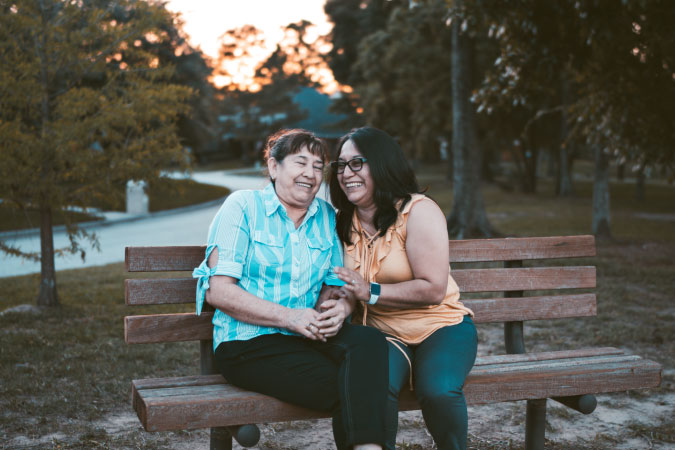As a culture, we tend to think wisdom is automatically gained just by living longer. That the older we get, the wiser we become.
But is this entirely true?

It may be so in many cases, but as we age, we can also have a strong tendency to become more narrow-minded. Maybe we think we’ve finally figured out the world around us. Or is it that we’ve come to define it in a way that seems comprehensible?
Either way, we can close ourselves off from new possibilities. We might take refuge in fixed points of view, at the expense of discovery and wonder. And aren’t discovery and wonder the essence of the youthfulness we seek to sustain?
So what can we do to prevent narrow-mindedness from creeping in as we age?
Today, I want to talk about how engaging with diversity can help us avoid the trap of inflexible thinking—and ultimately, how it can lead to more wisdom, learning, and sharing.
How Does Contact With Diversity Increase Wisdom?
Contrary to the belief that we naturally get wiser as we age, Ursula M. Staudinger of Columbia University says we actually have to work hard to become wise. This includes seeking new experiences and challenges as we age. If we give in to a tendency to close off from the world, and stop challenging ourselves, true wisdom may elude us.
So what can we do to become the wise elders we’re meant to be? We can stay open and curious about new experiences and cultivate diverse connections.
We need to stay engaged with younger people to challenge our mindset. We need to build connections with people of diverse ethnic and cultural origins. This is truly one of the most rich and rewarding experiences of humanity. There is evidence that shows social diversity increases creativity, awareness, critical thinking skills, and emotional intelligence. All of which can lead to greater wisdom.

Isn’t this more meaningful for later life than an opposite tendency, which could be to cocoon amongst a comfortable and homogeneous crowd that seems to think and act just like we do?
Heading into the most mature phase of your life, what would you choose – comfortable space and agreeable uniformity, or the challenge, opportunity, and benefits of diversity? Which approach will keep you healthy in a holistic sense?
The later stage of life can present our best opportunity to develop our emotional intelligence (EQ) and cultural intelligence (CQ). These are vital human capacities that quite different from the more commonly recognized “IQ”.
Youth and Elderly Connections Create Cross-Generation Sharing
Diversity around us helps us better define who we are, and what we stand for. It helps us learn from others, while contributing what we’ve learned through our life’s journey. For younger families, immersing their children in diversity of all kinds is essential to their well-rounded education and preparation for the connected world of the future.
When it comes to diversity of age, it’s easy to see that different age groups support each other naturally. Elders have perspective and empathy because they’ve “been there, done that”. Younger people exude spontaneity and possibility with their enthusiasm. Each feeds off the other.
To learn more about why we’re such big supporters of cross-generation interaction, see our post, Benefits of Intergenerational Relationships.

In the simple activities of daily living, the generations have much to contribute to one another. Elders have time, wisdom, and patience. They can make for great part-time childcare mentors. When they need simple supports like rides, errands, or even cooking, it can be easy for younger neighbours and family to help out.
Intergenerational Housing Models Bring Diversity Closer to Home
When generations are living in close proximity to one another, it’s easier for them to support each other in a modern world where time is always precious, and schedules are always busy. Diversity in proximity can cause effortless mutual support to occur.
For a closer look at the benefits of intergenerational housing, see Why We Need More Intergenerational Living Communities.
Looking at lifestyle choices and financial pressures, we can see further potential for intergenerational proximity. Many people at various stages of life long for some part-time income opportunities that are relatively effortless. Work from home options start to become attractive.
For example, a young parent already cooking for their own family could cook for an older neighbour. The older neighbour could, in turn, provide some childcare. Either could do some housekeeping for the other quite conveniently, and charge less thanks to the convenience.
Final Thoughts
Arranging our spatial connectedness around diversity seldom happens accidentally. It takes a commitment to the design and engineering of living arrangements and lifestyles. When people come together with shared values for diversity and closer connections, they create opportunities for learning and sharing.
This is the vision of Carpe Diem Suites – a return to the village of the past, in the urban living space of the future.
